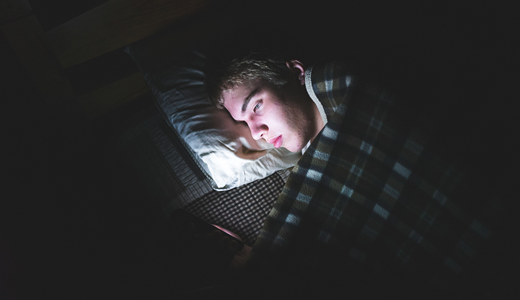You’ve finished your day’s tasks. Maybe you’ve relaxed a bit. Your eyes are getting heavy, and it’s time for bed. What do you do with your phone?
It’s a peculiarly contemporary question, really. Before the advent of smartphones (and, to a lesser extent, texting) you’d probably only think to keep your phone nearby if you were awaiting an important, late-night call.
But that’s all changed now. With a smartphone comes the compulsion to keep it close. I mean, what if we want to check something in the middle of the night? What if someone texts us? What if a close friend updates her social media profile and is anxiously awaiting those first likes to trickle in, never mind that it’s 2:38 in the morning?
Yes, these days, our phones are affecting our sleep. And Common Sense Media’s latest research report, “The New Normal: Parents, Teens, Screens, and Sleep in the United States,” unpacks exactly how these devices are doing that.
For starters, we’re sleeping with our phones close by: A full 62% of parents and 39% of teens slumber with their devices within an arm’s length. But 29% of teens actually have their phones in bed with them. Why? Perhaps because 36% of teens wake up and check their phones in the night (compared to 26% of parents). More often than not (54% of the time for teens, 51% of the time for parents), that’s because their phone has given them some sort of notification that they wake up to check.
And even though doctors and researchers say that looking at your phone within an hour of going to bed may affect the quality of your sleep, 61% of parents and 70% of teens use their phones within 30 minutes of going to bed.
In other phone-ish news, experts continue to worry about the risks people take in search of the perfect selfie. These might include snapping pics of yourself next to a cliff. Or a geyser. Or a bear. Or an airplane that’s about to land. And the consequences of mistiming a risky shot like this could be lethal. So much so, in fact, that the trend has spawned a new term: killfies. USA Today reports that every month this year has included news reports of death by selfie.
Dr. Aaron Balick, author of The Psychodynamics of Social Networking, told USA Today, “For most people, their survival instinct will supersede their validation instinct. For others, the opportunity for a photo supersedes personal safety at that moment. It’s almost like you get possessed.”
Meanwhile, Variety reports that Snapchat is battling with a pornography company that has been distributing augmented reality “lenses” that enable users to superimpose images of porn stars over images of their own living rooms. Snapchat has disabled the service, claiming that it violates the company’s usage rules. But the company in question continues to look for ways to promote its products. Variety writer Janko Roettgers notes,
The take-down may not be enough to stop the distribution of AR lenses featuring [the company’s] porn performers on Snapchat. The porn company didn’t just make its own lenses, but also began distributing holographic source files necessary to build similar filters to its users, complete with a manual on how to do so.
Commenting on this story, Relevant editors note that these sorts of concerns will likely become more common as new augmented reality technology emerges.
In a kinder, gentler smartphone story, the Wall Street Journal reports that allowance apps are transforming the traditional monetary transactions between parents and kids.
And another instance of technology being implemented to promote safety comes to us courtesy of Chevrolet. The car company is rolling out a new feature called “Buckle to Drive”. It uses a teen-driver setting in the key fob that requires drivers to click their seat belt first before being able to start the car or, perhaps more tellingly, use the radio. Chevrolet and driving-safety experts hope that features such as this one will help raise teen seat belt usage from its 2017 level of just 59% (compared to 86% of drivers and front-seat passengers as a whole).
And if you’re wondering, “Why on earth wouldn’t a teen use a seat belt?” well, maybe it’s because their brains are still developing—a reality this infographic from TeenSafe helps us understand better.
Finally this week, if you’ve ever watched a sports movie and thought, “Man, how do they make it look so real?” well, sometimes, it is. Actor Sylvester Stallone is promoting his forthcoming film Rambo V: Last Blood at the Cannes Film Festival. In an interview, Stallone revisited a particularly violent moment with his onscreen opponent in Rocky IV, the Russian behemoth Ivan Drago (played by Dolph Lundgren). Stallone went on to recount how trying to make the inside-the-ring action look realistic for the movie almost killed him:
I told him, “Why don’t we just do it? Just try to knock me out. Really cut loose as hard as you can.” That was a really stupid thing to say. Next thing I know, I’m on a low-altitude plane to the emergency room, and I’m in intensive care for four days. And there are all these nuns around.
Sometimes, it looks real because it is real.






Recent Comments